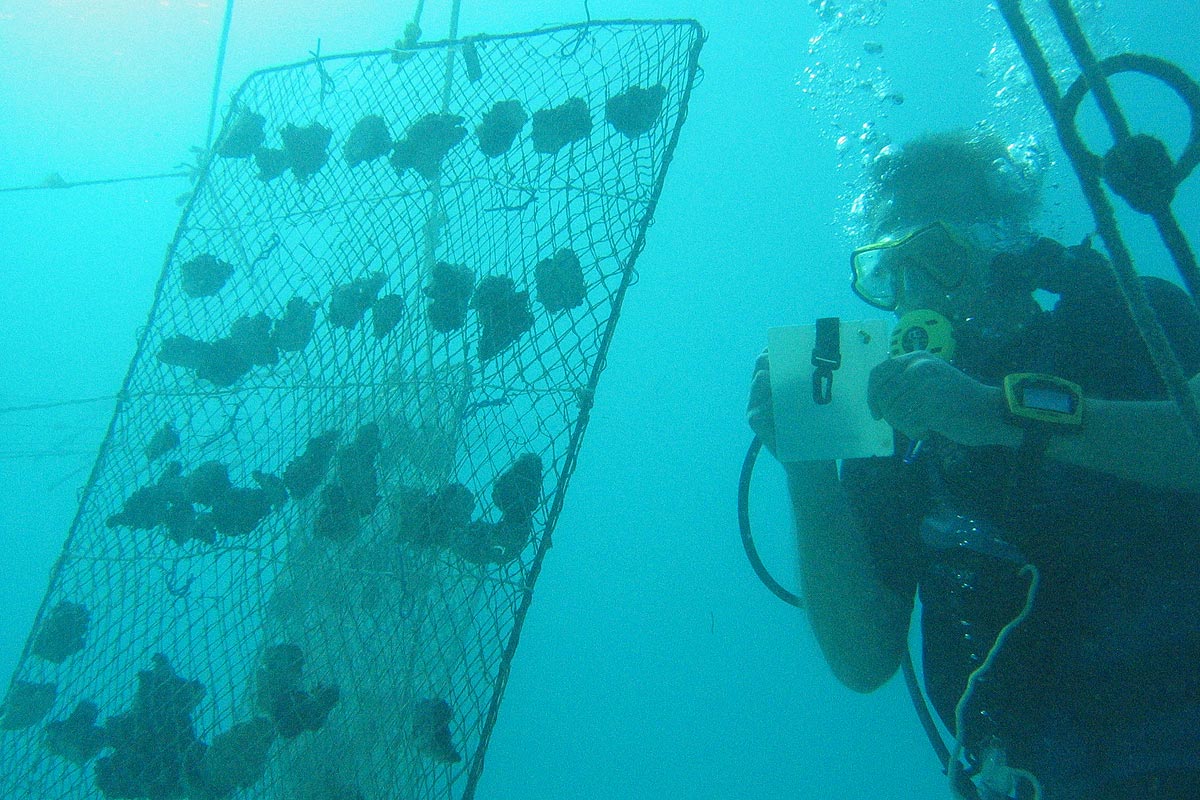Jan-Feb 2015: Start Reefball Project
26.02.2015
In cooperation with the fishermen committee of Kibigija, the local NGO's Mwambao and Jamabeco as well as an American training crew we produce 86 reef balls of different sizes. It is the first reef ball project in Africa at all.
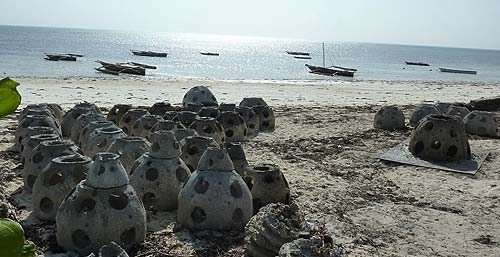
The sophisticated patent with fiberglass molds and inflatable buoys is simple and the fishermen have a lot of fun despite the hard work.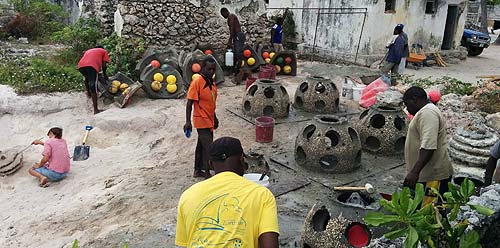
We quickly realize that the building of an artificial reef offers a very good starting point to teach the fishermen, the interested villagers and the pupils about the ecological importance of coral reefs. In contrast to the farming of sponges and corals the 'fish homes' are produced on land and the villagers can see and touch them. We hold the first awareness events for fishermen and pupils and decide to create a special educational program and look for additional funding. 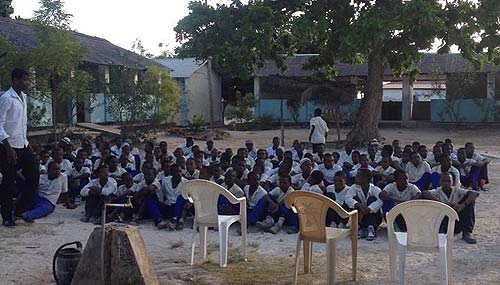
The fishermen show us the site in the lagoon they think is most suitable for the reef ball action. Some naturally growing corals nearby indicate that their choice is a good one, also the depth of 6-7m on high tide and 3-4m on low tide is perfect in realtion to the water temperature and the light. The fishermen want to mark the area as a No Take Zone with buoys and protect it from other fishermen with nets. This is way up our alley.
Having dried for 30 days the reef balls are hard enough and the big day of the first deployment has come. Not only the nearly complete fishermen committee is here, the chief of the village, the directors of the Menay Bay Conservation Area and the Ministry of Fisheries, the press and the television observe how we float the reef balls with buoys and drag them in walking speed out into the lagoon.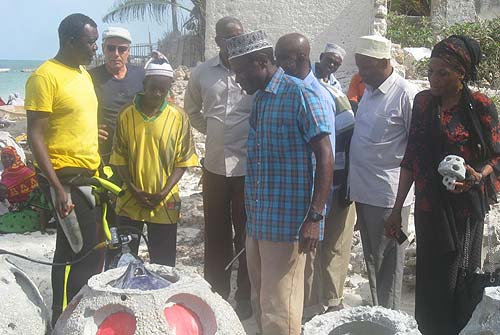
On the deployment site we release the air from the buoys and sink the reefballs one by one to the bottom of the sea. We take care that we keep enough distance to spots with natural coral growth and do not harm seagrass beds and avoid sandy places where the reef balls would sink in. It looks quite easy but the diving work is very strenuous and dangerous. And over 70 more of the 300-870kg concrete monsters are waiting for deployment on the shore!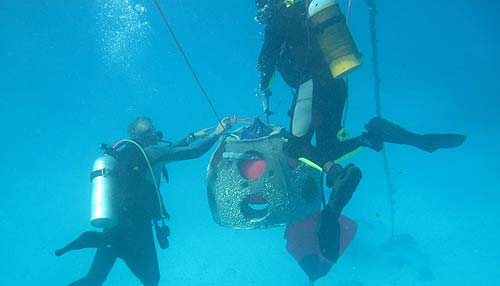
We are amazed at how many fish are present in the reef balls after just one day. They have squatted their new homes with quite some speed. Instead of waiting for larvae to slowly settle on the balls and slowly grow, we will during the next months plant corals and sponges on the reef balls. In our coral farm we transplant hundreds of soft and hard corals that have grown on the ropes and buoys of the sponge farms onto small concrete plugs. They fit into special holes of the reef balls and the planting will speed up the process. 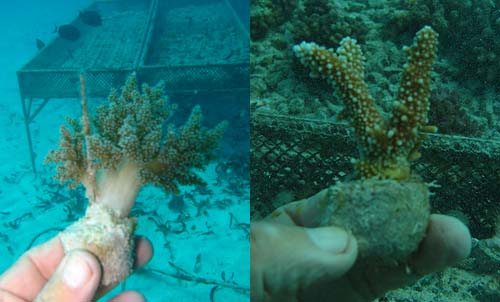
By planting corals our team can also learn a good deal about the reforestation of damaged reefs. Confronted with the still widely spread dynamite fishing on the coast of mainland Tanzania building reforestation know-how seems to us a worthwhile investment.


